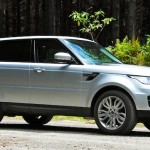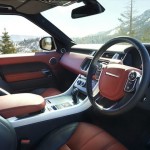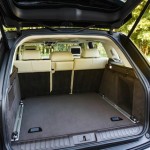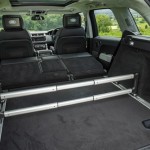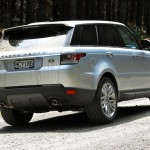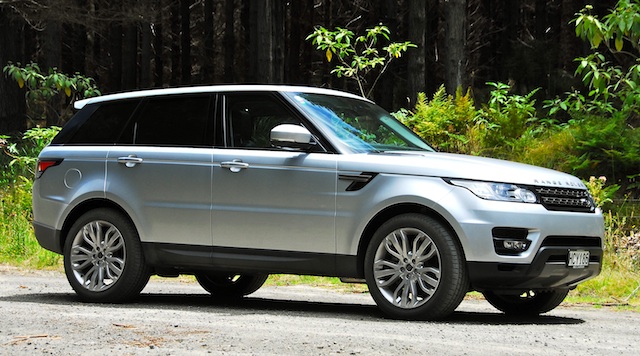
[toggle title_open=”Car specification” title_closed=”Car specification” hide=”yes” border=”yes” style=”default” excerpt_length=”0″ read_more_text=”Read More” read_less_text=”Read Less” include_excerpt_html=”no”]Price: $125,000 ($143,800 as tested)
Engine: 3.0-litre V6 turbodiesel, 190kW/600Nm
Transmission: Eight-speed automatic
Fuel economy: 8.5 litres/100km
Emissions: 194gr/km (Euro 5)
Equipment: Bluetooth, 8-inch touch screen navigation, power outlets throughout, USB sockets, voice control
Safety: Not yet tested, although bigger Vogue has five-star rating
Factory warranty: Three-year unlimited mileage[/toggle]
Back in 1982 I drove a two-door Range Rover over part of the tortuous Camel Trophy route in Papua New Guinea. I was the editor of one of the country’s two daily papers and the Camel Trophy organisers had parked in the newspaper’s 4m-high fenced compound the Range Rovers and Land Rovers they used. The two-door had under its bonnet the 3.9-litre V8 petrol engine, a bored-out 135kW/320Nm version of the original 101kW 3.5-litre Buick unit. From memory, we averaged about 8mpg, or around 35 litres/100km. The latest Range Rover Sport the other day averaged 8.5 litres/100km (33mpg). Okay, it was over 400km on a mix of suburban streets, motorways and country roads, easy street compared with tropical jungle tracks. The Sport was also running a lazy 3.0-litre twin-turbo V6 diesel delivering 190kW/600Nm. The comparison doesn’t wash – it serves only to salute the on-going development of one of the most influential vehicles ever. To be sure, Range Rovers have been plagued with reliability problems, flaky electronics especially. The Sport shares some of its running gear and electronic systems with the larger Vogue, mostly to improve reliability across the range. And like the Vogue it ditches the heavy steel platform of its predecessor in favour of a much lighter aluminium chassis. Result: Better ride and handling. Sport sits in between the Evoque and limousine-like Vogue and is aimed more at hustler variants of the Mercedes-Benz M-Class, BMW X5 and Porsche Cayenne, all four high-riders using whizzbang traction and suspension electronics to keep them planted. The Sport is the aristocrat among them, but with street smarts and an ability to go further off the beaten track. It is a supremely capable vehicle, more luxurious, more efficient and much better to drive than the previous model.
[hr]
Good features
Luxurious cabin, road manners, fuel economy, effortless engine, superb brakes
Not so good
Another few centimetres of leg room in the rear would be handy
[hr]
[box type=”tick” size=”large” style=”rounded”]Rating 8.5/10[/box]

